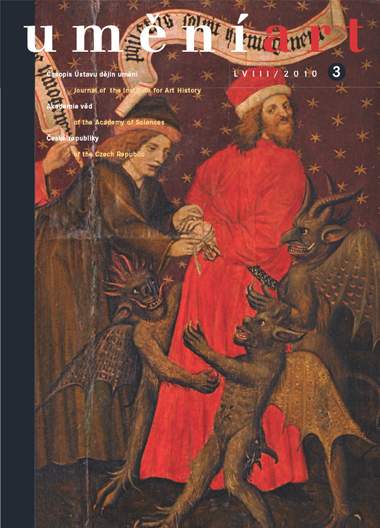Karolína Fabelová
La collaboration entre Camille Mauclair et l'association Mánes, a l'occasion de l'exposition Henri Le Sidaner et Louis Dejean et de l'exposition des impressionnistes français a Prague
The French critic and writer Camille Mauclair (1872-1945) was regarded in his youth as a pre-eminent man of letters and he was instrumental in shaping the international art scene. This is one of the reasons why in 1902 F. X. Šalda began to push to have Mauclair's writing published in Volné směry (Free directions). Nevertheless, in 1905 Mauclair began to turn his back on modern art and take a very critical view of it. Although Šalda and the Mánes association were aware of this, they continued their cooperation with Mauclair, and in May 1907 they invited him to Prague, where he gave three lectures on literature, music, and art. In a lecture called 'The Battle for Freedom in French Art from the 16th Century to the Present' his bias towards the national French tradition became apparent to a point bordering on nationalism. During his Prague visit, which at the time was a very important cultural and political event, Mauclair appeared at the opening of an exhibition of paintings by Henri Le Sidaner and sculpture by Louis Dejean. The work of these two artists very much suited his taste, because they combined both Impressionist and Symbolist techniques. However, the exhibition got little in the way of a response from Czech artists. After his visit Mauclair wrote several articles on Czech art for French magazines, but they were not received with much enthusiasm from Mánes. Inspired by the exhibition 'The Development of Impressionism in Painting and Sculpture', organised by Julius Meier-Graefe in Vienna in 1903, in the autumn of 1907 Mánes prepared an exhibition of French Impressionists in Prague. The main organisers were Šalda and Mauclair, whose Paris contacts were essential for such an undertaking. The exhibition managed to put together 150 paintings, not of first-class quality, but capable of providing a good illustration of artistic developments in recent years. The exhibition marked the high point of cooperation between the Mánes association and Mauclair.
Full-text in the Digital Library of the Czech Academy of Sciences:
https://kramerius.lib.cas.cz/uuid/uuid:62690eb2-01f9-2a85-ff05-8e7fffc462c8
< back

